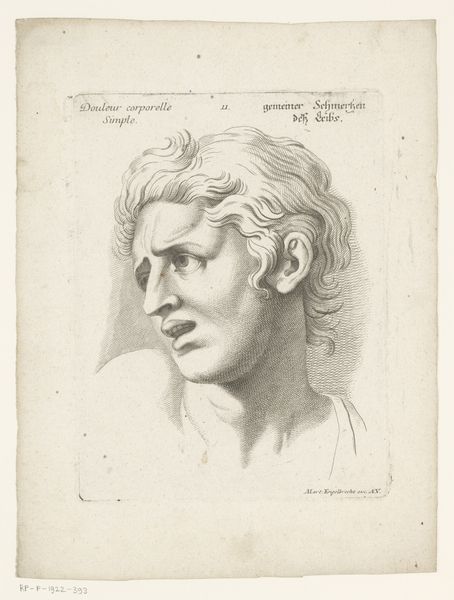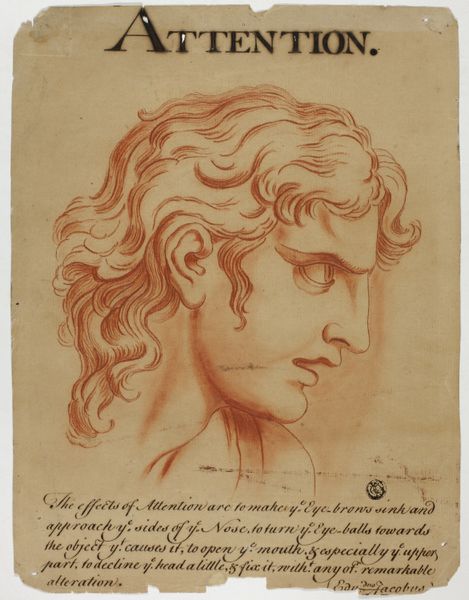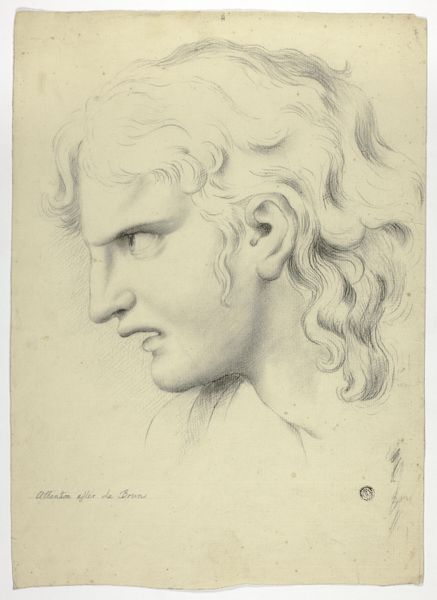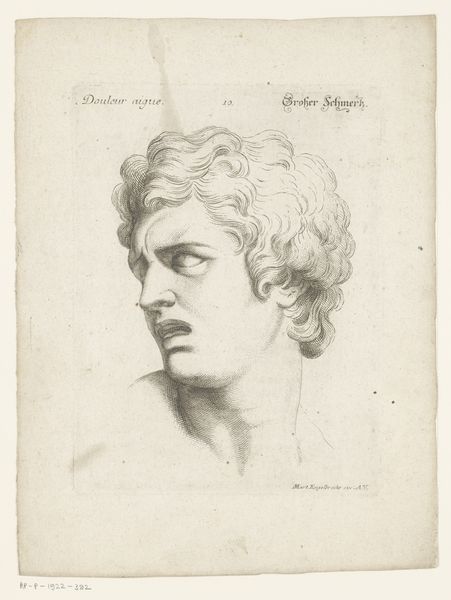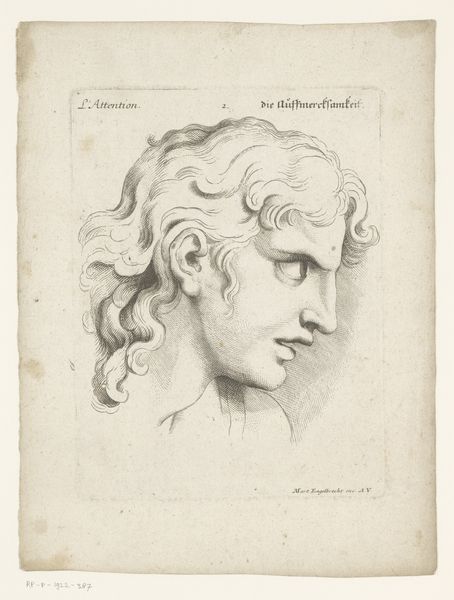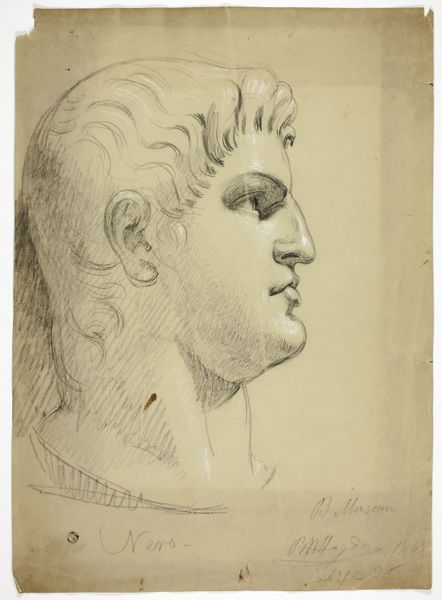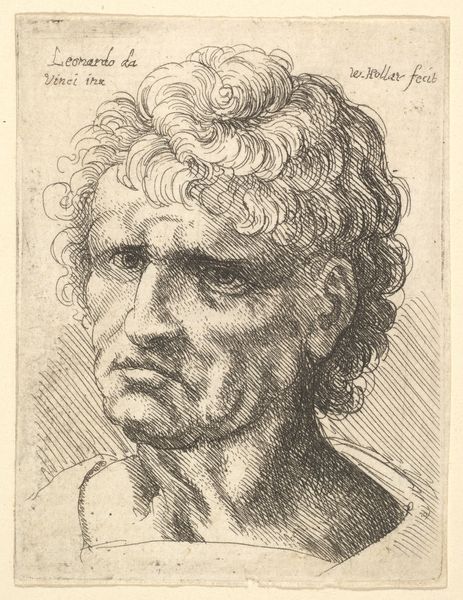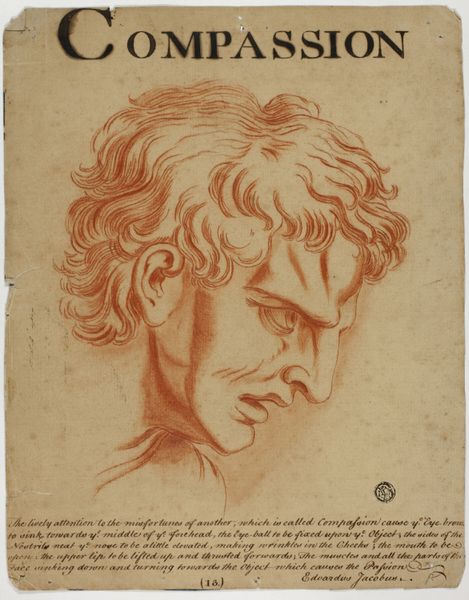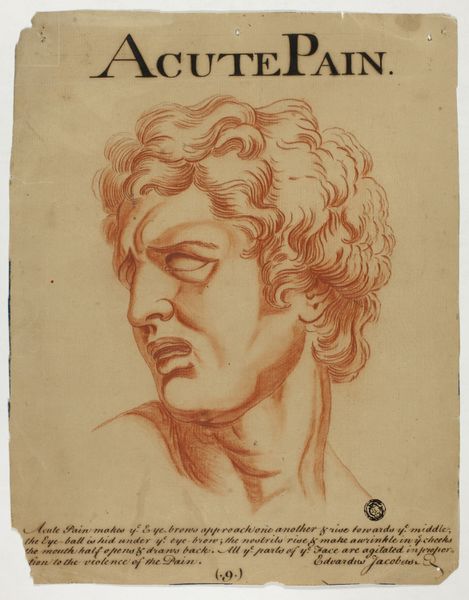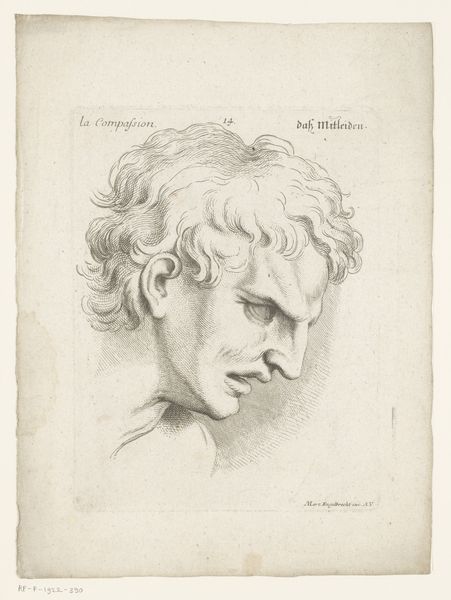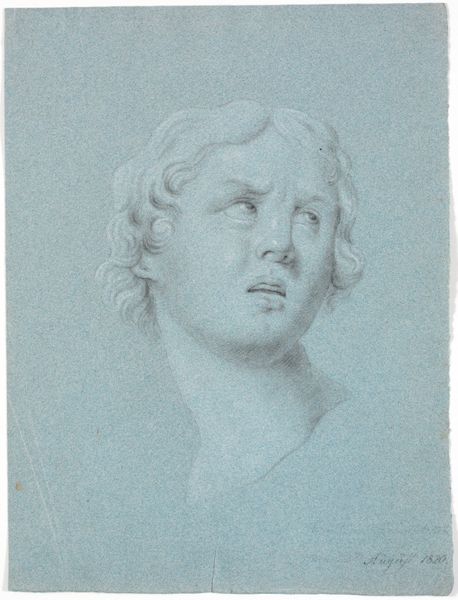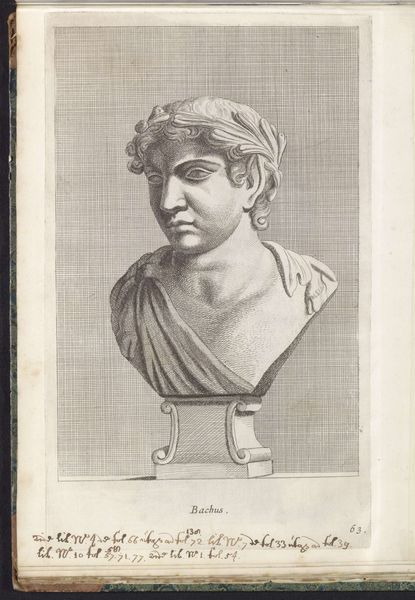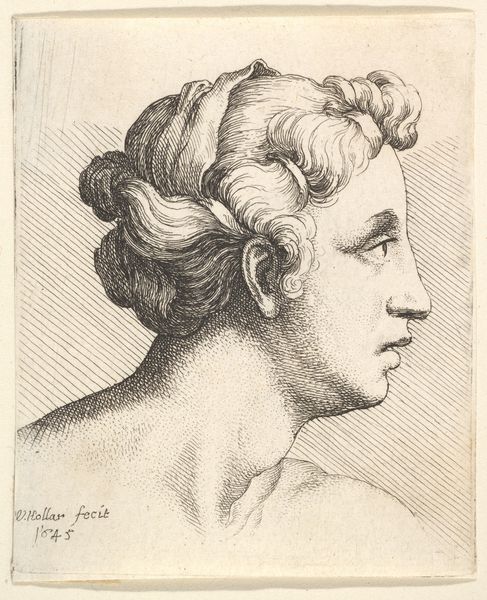
Simple Bodily Pain (from "Heads Representing the Various Passions of the Soul; as they are Expressed in the Human Countenance: Drawn by that Great Master Monsieur Le Brun") 1765 - 1800
0:00
0:00
drawing, print, engraving
#
portrait
#
drawing
#
neoclassicism
# print
#
figuration
#
15_18th-century
#
line
#
history-painting
#
academic-art
#
engraving
Dimensions: Plate: 11 1/4 x 7 1/4 in. (28.6 x 18.4 cm)
Copyright: Public Domain
Curator: The first thing I notice is the subject’s contorted expression—his brow furrowed, lips slightly parted, a look of…well, simple bodily pain. There’s something undeniably visceral about it. Editor: And this is exactly the intention. What you're seeing is "Simple Bodily Pain," an engraving created between 1765 and 1800 by an anonymous artist. It is currently housed at the Metropolitan Museum of Art. What's so fascinating about it is its context within the academic tradition. Curator: Ah, academic art! The precision is remarkable. The artist is clearly invested in capturing the specifics of human emotion through the manipulation of line and form. Editor: Precisely! Pieces like this served a didactic function, rooted in theories concerning emotional expression popularized during the Enlightenment, especially influencing historical paintings of the era. You see this reflected through art academies throughout Europe, where mastering representations of "passions" was central for elevating the status of a painting beyond mere illustration, placing it amongst the most complex form of storytelling and narrative in painting. Curator: Absolutely, the rendering evokes Classical sculpture – that idealised head. But there’s also this palpable sense of inner turmoil. The precise lines almost paradoxically heighten the feeling of rawness. It’s compelling. It makes one wonder about the nature of emotional performance and authenticity and in turn reflects upon how to best convey truth in artistic form. Editor: The artwork's legacy prompts us to look carefully at the socio-political implications inherent to expressions of feeling, even when abstracted or presented under the veneer of detached study. It suggests more intricate structures than its formal, detached representation can contain. Curator: Thank you! Your work has truly illuminated a fascinating perspective. I’m beginning to grasp the ways that it encourages the construction of a very specific reading that it still contains an ocean of historical data to dissect! Editor: A great reminder that things aren't always as they appear. In exploring the artistic representation of bodily pain, we see how deeply embedded our understanding of emotions are within historical context.
Comments
No comments
Be the first to comment and join the conversation on the ultimate creative platform.
